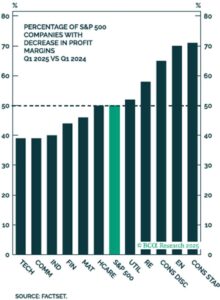Jun 13, 2025
Traders swear by Fibonacci retracement — a simple yet powerful tool that helps decode the market’s twists and turns. Rooted in a centuries-old mathematical sequence, these key levels reveal where prices might stall, bounce, or reverse. Whether you’re hunting for the perfect entry or exit point, understanding Fibonacci retracement can transform your trading strategy from guesswork into precision. It’s not magic — it’s market psychology. When enough traders watch these levels, they become self-fulfilling turning points. Ready to discover how this natural pattern from goat horns to flower petals can guide your next trade?
Fibonacci retracement is one of the most popular and widely used technical tools among traders. Whether you’re a day trader searching for short-term entry points or a medium-term investor aiming to identify key support and resistance levels, understanding how to apply Fibonacci retracement can add valuable insight to your market analysis.
At its core, Fibonacci retracement helps traders pinpoint potential reversal levels during price corrections by using ratios derived from the famous Fibonacci sequence — a mathematical pattern found both in nature and financial markets.
The Fibonacci sequence begins simply: 0, 1, 1, 2, 3, 5, 8, 13, 21, 34, and so on. Each number is the sum of the two preceding numbers. As the sequence progresses, the ratio between consecutive numbers converges to approximately 1.618, a number known as the Golden Ratio. This ratio is more than just a mathematical curiosity; it appears in many places throughout the natural world. For example, the proportions of the human body often approximate the Golden Ratio, such as the length of the forearm relative to the hand, or the distance from the navel to the feet compared to overall height. Similarly, the horns of goats and rams grow in spirals that follow this ratio, and many flowers arrange their petals in counts matching Fibonacci numbers to maximize sunlight exposure and optimize growth.
Technically, nothing. But the reason Fibonacci retracement resonates so strongly with traders is its popularity. The more traders rely on an indicator, the more self-fulfilling it becomes. When enough market participants watch certain Fibonacci levels and place their buy or sell orders accordingly, these levels tend to act as significant points of support or resistance in price action.
The more widely followed a technical indicator is, the more likely it is to become self-fulfilling. Fibonacci is a prime example.
Using Fibonacci retracement in trading involves first identifying a significant price move — a clear high and low on a chart. Then, by applying the Fibonacci retracement tool between these two points, horizontal lines are drawn at key Fibonacci ratios, highlighting possible areas where the price may pause or reverse during a retracement. The time horizon you choose depends on your trading style: day traders often focus on intraday charts, while medium-term investors may look at daily or weekly charts for a broader perspective.
Among the Fibonacci levels, 23.6% and 78.6% are considered minor retracement points, where minor price pauses might occur. The major levels, including 38.2%, 50%, and 61.8%, are more critical. These levels tend to act as stronger support or resistance, and a decisive break beyond the 61.8% retracement level is often interpreted as confirmation that a new trend is developing.
For example, take the EURUSD currency pair during a sharp selloff. Applying Fibonacci retracement from the recent high to the low of this move reveals that the 23.6% retracement level often serves as the first resistance point where sellers may re-enter. If the price breaks above this, the 38.2% retracement level becomes the next significant resistance. Breaking through this level might indicate that the pair is entering a medium-term bullish consolidation phase, with the next targets being the 50% and 61.8% retracement levels. Should the price break decisively above 61.8%, it could signal the start of a fresh uptrend.
Conversely, during a rally, applying Fibonacci retracement from the recent low to the high of this move could point at the 23.6% retracement level as the first support where buyers may step back in. If the price falls below this level, the 38.2% retracement level then becomes the next key support zone. Breaking below this level could signal that the pair is entering a medium-term bearish consolidation phase, with further downside targets near the 50% and 61.8% retracement levels. A decisive drop below 61.8% may confirm the start of a fresh downtrend.
Fibonacci retracement levels are also used across asset classes. Whether you’re trading stocks, forex, commodities, or cryptocurrencies, the principles remain the same. Traders identify recent swing highs and lows and apply the Fibonacci tool to look for retracement zones. This consistency across markets adds to its versatility.
There’s also an element of subjectivity. Different traders may choose different swing highs and lows, resulting in slightly different retracement levels.
The key is consistency — applying the tool in the same manner across different trades could provide a better understanding of the price dynamics.
Fibonacci retracement isn’t some secret formula that guarantees market success. Rather, it’s a tool grounded in market psychology and widespread trader behaviour. Because many traders watch these levels, they become natural focal points for price reactions. For anyone looking to deepen their technical analysis toolkit, mastering Fibonacci retracement can be a valuable step toward better understanding market movements and making more informed trading decisions.
As other technical indicators, Fibonacci retracement is rarely used in isolation. Combining it with other technical indicators enhances its effectiveness.
Traders often use tools like the Moving Average Convergence Divergence (MACD) to gauge momentum, the Relative Strength Index (RSI) to identify overbought or oversold conditions, and moving averages to understand the overall trend direction. Together, these tools provide a richer context for interpreting price action and increase the reliability of trading signals.
One popular approach is to pair Fibonacci with moving averages. If a 61.8% Fibonacci level aligns with the 200-day moving average, for instance, that confluence creates a powerful support or resistance zone. Traders are more likely to act at such a level, increasing its reliability.
Similarly, oscillators like the Relative Strength Index (RSI) or Stochastic Indicator help traders assess momentum. If the price is retracing to a Fibonacci level while RSI is entering oversold territory, it may present a strong buy opportunity.
The MACD (Moving Average Convergence Divergence) is also useful. When a bullish crossover in MACD aligns with a Fibonacci support level, that’s a compelling case for entry.
Price action confirmation — such as a bullish engulfing candle, hammer, or pin bar — can further validate the importance of a Fibonacci level. Waiting for such signals helps filter out weak setups and gives traders greater confidence.
It’s important to understand that Fibonacci retracement works best in trending markets. In strong trends, retracements tend to be shallow, often respecting the 23.6% or 38.2% levels. In weaker trends or during consolidation phases, retracements may go deeper — towards 61.8% or even 78.6%.
In highly volatile or news-driven environments, Fibonacci levels can be temporarily ignored as emotions dominate market behavior. But once the dust settles, these levels often reassert their influence.
It’s also helpful to use multiple timeframes. A Fibonacci retracement drawn on a weekly chart might show strong resistance at a level that is invisible on a 15-minute chart. Combining timeframes allows you to zoom in and out and place trades with broader context in mind.
Like any technical analysis tool, Fibonacci retracement is most effective when applied thoughtfully and in conjunction with other techniques. While the levels may appear simple and intuitive, there are several common pitfalls traders fall into that can lead to poor decisions and costly trades. Avoiding these mistakes can significantly increase the accuracy of your analysis and the consistency of your results.
1. Using Unclear Swing Highs and Lows
One of the most frequent mistakes traders make is choosing inappropriate points for the retracement tool — particularly unclear or subjective swing highs and lows. The accuracy of Fibonacci levels depends entirely on where you anchor the tool.
For instance, if you pick a minor fluctuation in the middle of a broader trend, your Fibonacci levels might not align with significant price reactions.
This can result in misleading signals. The best approach is to identify clearly defined swings — those that mark major turning points on the chart, visible not just on one time frame but across multiple ones. A swing high should be an obvious peak before a notable decline, and a swing low should be a clear trough before a notable rise.
A good rule of thumb: If you’re unsure whether a particular high or low is significant, zoom out. Larger timeframes often clarify the dominant trend and help you spot cleaner anchor points. The more obvious the swing, the more likely other traders are watching it — making the Fibonacci levels drawn from those points more reliable.
2. Relying Solely on Fibonacci
While Fibonacci retracement can be an excellent guide, it’s not a magic bullet. Relying on it in isolation, without confirmation from other indicators or market context, can lead to false confidence. Price may approach a key Fibonacci level, but without confirming signals — such as a reversal candlestick pattern, divergence on the RSI, or a bounce off a moving average — there’s no guarantee the level will hold.
A common scenario: a trader sees price retrace to the 61.8% level and enters a trade expecting a bounce. But if the broader trend is weakening, volume is dropping, and momentum indicators show no support, that bounce might never come. Instead, price could slice right through the level, leaving the trader stuck in a losing position.
To avoid this trap, use Fibonacci as a reference point rather than a directive. Always seek confluence — points where Fibonacci aligns with other technical tools or prior market structure. The more reasons you have to believe a level will hold, the stronger the trade setup becomes.
3. Forcing Patterns That Aren’t There
Fibonacci tools can be seductive. It’s easy to look back on a chart and find examples where price ‘respected’ a retracement level. The danger lies in seeing what you want to see — drawing Fibonacci levels onto a chart and adjusting them repeatedly until they seem to work.
This kind of retrospective curve fitting gives the illusion of predictive power, but it doesn’t help in live trading.
Just because price touches a Fibonacci level doesn’t mean it will reverse. Sometimes price pauses briefly, then continues through; other times, the retracement is shallow or even non-existent.
Traders often get caught up in forcing patterns, especially when a market is choppy or trendless. But the key is to apply Fibonacci retracement only when there is a clear, strong impulse move to measure. If the price action is sideways or lacks momentum, there may be no meaningful retracement levels to track.
Instead of trying to make Fibonacci fit every scenario, wait for clean, directional moves before drawing your levels. Be disciplined in choosing when to apply the tool, and let the market come to you — not the other way around.
4. Ignoring Broader Market Context
A critical mistake many traders make is applying Fibonacci retracement in isolation from the larger market trend. For example, in a strong downtrend, a bounce up to the 38.2% retracement may look like a buying opportunity. But if the broader structure is still bearish, that bounce might be nothing more than a dead cat bounce — a temporary recovery before a deeper fall.
Conversely, in a powerful uptrend, a trader might get overly aggressive shorting at a 50% or 61.8% retracement, thinking the rally is over. In reality, that level may simply be a pause before the trend resumes and blasts higher.
Always zoom out and understand the macro picture. Where are you in the trend? What does the weekly chart show compared to the 15-minute chart? What are other markets doing — such as related sectors, commodities, or currencies? Is a major economic report or earnings release approaching that could invalidate the setup entirely?
Fibonacci levels are best interpreted within the context of trend strength, fundamental drivers, and macro sentiment. Ignoring the wider picture is like sailing without checking the weather — you might get lucky, but it’s a risky bet.
5. Blindly Trading Every Level
Some traders treat Fibonacci levels as if each one should produce a trade. But not every level is created equal. Some retracements — especially the 23.6% or 78.6% levels — may carry less weight unless there is significant confluence with other technical factors. Blindly entering trades at every Fibonacci level can lead to overtrading, whipsaws, and unnecessary losses.
Instead of reacting to every retracement, think of Fibonacci as a zone rather than a precise line. Wait for price to reach a level and show signs of acceptance or rejection. Is volume rising at the 50% level? Do you see a double bottom or bullish engulfing candle near 61.8%? Is there a key moving average reinforcing that area?
Use Fibonacci levels as alerts — not automatic triggers. Let them inform your analysis, not dictate your entries.
6. Failing to Adjust in Real Time
Markets are dynamic. A level that looked valid during the London session might get invalidated during the New York session. News events, sudden volatility, or trend reversals can all render your original Fibonacci retracement obsolete.
Some traders become overly attached to their initial analysis and refuse to adjust. But being flexible is critical. If a trend extends or a new high or low is formed, redraw your Fibonacci levels. Update your chart as the price action evolves — don’t rely on outdated measurements.
Live trading is fluid. Treat Fibonacci as a living tool, not a static one. Staying reactive to the market improves your adaptability and helps you manage risk more effectively.




